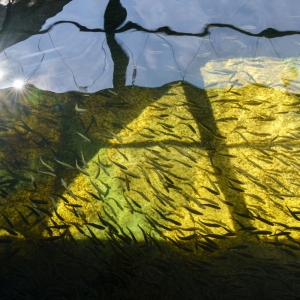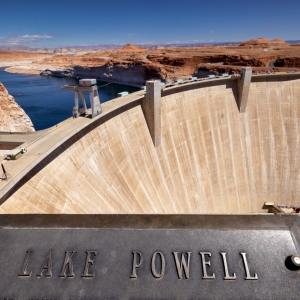Federal Water Tap, June 6: White House Links Water and National Security
The Rundown
- The Biden administration outlines its priorities for global water security.
- The Defense Department releases new data on PFAS found in drinking water near its bases.
- The Bureau of Reclamation restarts a salinity control facility in the Colorado River basin.
- EPA science advisers publish a report evaluating the agency’s Waters of the U.S. proposal.
- A Senate Agriculture subcommittee will hold a hearing on the effect of the western drought on farms and forests.
- Energy forecasters expect drought conditions to cut California’s hydropower output this summer by half.
And lastly, the Army Corps considers policy changes to enhance environmental justice and tribal participation in agency decisions.
“Water insecurity makes our world less stable. When water is scarce, it becomes more difficult for communities to produce food, as these experts have talked about, more difficult to protect public health and to drive economic growth. This, in turn, as has been discussed, can lead to mass migration, which can put significant pressure on neighboring communities. Water insecurity also makes our world less safe. Disputes between countries or communities over limited water resources can, predictably and by extension, over time provoke armed conflict. So let’s get in front of this. Let’s take it seriously.” — Vice President Kamala Harris speaking about the administration’s global water security action plan.
By the Numbers
8 Percent: Share of California’s total electricity generation this summer that is expected to come from hydropower, according to the Energy Information Administration. Due to drought and low reservoirs, expected hydropower output is about 50 percent lower than under normal conditions.
News Briefs
Global Water Security
The Biden administration unveiled its “action plan” for global water security that acknowledges water scarcity and pollution abroad can threaten U.S. national security interests.
The plan in some ways is standard government boilerplate: collaboration, partnerships, data, whole-of-government approach. Notably, however, it recognizes that in order for water issues not to be marginalized, they need to be pulled into regular diplomatic processes:
“The Action Plan recognizes that integrating water security into national security means ensuring that traditional foreign policy efforts, such as addressing governance challenges and empowering local communities, not only incorporate, but also elevate, water security.”
And it’s not just about toilets and taps. The plan makes clear that water security is a big umbrella, covering climate change responses, ecosystem health, hygiene, and the productive use of water for food and fuel.
The plan builds on previous White House efforts to focus on the security implications of water scarcity and pollution. In 2017, the Trump administration released a Global Water Strategy that was ordered by Congress. A five-year update to that strategy will be released in October.
Studies and Reports
Defense Department Releases PFAS Data
The Defense Department released a first batch of data that reveals the extent of the spillover effect that resulted in PFAS contamination spreading from military bases to surrounding non-military drinking water systems and private wells.
The data show that sites in four states — Florida, Michigan, Pennsylvania, and Washington — had samples above a federal health advisory for the chemicals PFOA or PFOS. The water samples were taken in 2021 and 2022.
“The initial set of data reveals that concentrations of PFAS at tested sites is much higher than previously revealed, and in certain circumstances, above state action levels, which will require immediate action,” wrote Jonah Brown of Marten Law.
The testing and public release of results was required as part of the 2022 National Defense Authorization Act.
WOTUS: Science Advisory Board Chimes In
The U.S. Environmental Protection Agency is in the process of reinstituting a definition of protected waters that existed before a series of rulemakings that began in the Obama administration.
The agency’s science advisers published a draft report that evaluates technical documents that underpin the change.
The advisers noted that the agency is justified in using groundwater connections to determine whether water bodies qualify for Clean Water Act protections.
They also said that the agency could more deeply examine the role that groundwater plays in connecting streams and wetlands — including groundwater use. The role of groundwater in Clean Water Act regulation is a topic of intense debate, one that led to a Supreme Court ruling in 2020.
Any agency action, however, could be altered by another case that the nation’s high court will hear later this year: Sackett v. EPA, which centers on the legal definition of wetlands.
Drought Working Group Annual Report
The White House released an annual report for an interagency drought working group that the Biden administration convened in April 2021.
On the Radar
Colorado River Salinity Control
The Bureau of Reclamation began field testing a facility that prevents high salinity groundwater from entering the Colorado River.
The field tests are a first step in restarting the Paradox Valley Unit, where Reclamation halted brine injection in 2019 following a magnitude 4.5 earthquake in the area.
Field tests at two-thirds capacity will run for six months, allowing technicians to collect data on seismic effects.
The facility pumps high salinity, naturally occurring shallow groundwater in southwestern Colorado, intercepting it before it reaches the Colorado River. The brine is then pumped deep into the earth.
Drought Hearing
A Senate Agriculture subcommittee will hold a hearing on June 7 to discuss the effect the western drought is having on farms and forests.
Army Corps Policy Changes
The Army Corps of Engineers, an agency with significant water infrastructure responsibilities, will hold a series of virtual public meetings as it seeks input on several important policy changes.
The changes will enhance consultation with Native American tribes, preserve historic sites, and elevate environmental justice in agency decisions.
The public meetings, all of which are free but require registration, will take place in June and July.
Local Government and Water Infrastructure
The committee that advises the EPA on matters relating to local government will hold a public meeting on June 23.
The committee currently has three areas for which it is providing recommendations: how local governments can access water infrastructure dollars; how those dollars can respond to climate change; and how the agency can help local governments address PFAS chemicals.
Federal Water Tap is a weekly digest spotting trends in U.S. government water policy. To get more water news, follow Circle of Blue on Twitter and sign up for our newsletter.
Brett writes about agriculture, energy, infrastructure, and the politics and economics of water in the United States. He also writes the Federal Water Tap, Circle of Blue’s weekly digest of U.S. government water news. He is the winner of two Society of Environmental Journalists reporting awards, one of the top honors in American environmental journalism: first place for explanatory reporting for a series on septic system pollution in the United States(2016) and third place for beat reporting in a small market (2014). He received the Sierra Club’s Distinguished Service Award in 2018. Brett lives in Seattle, where he hikes the mountains and bakes pies. Contact Brett Walton






Leave a Reply
Want to join the discussion?Feel free to contribute!